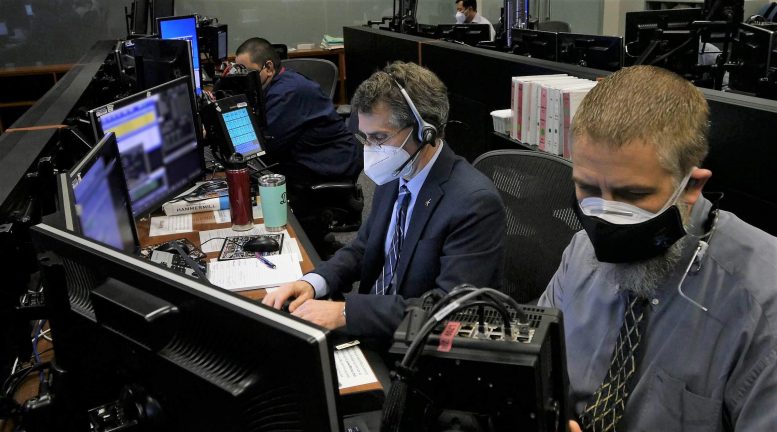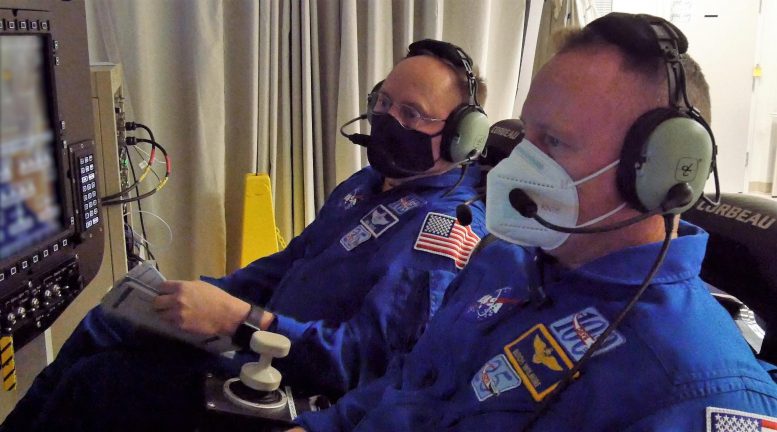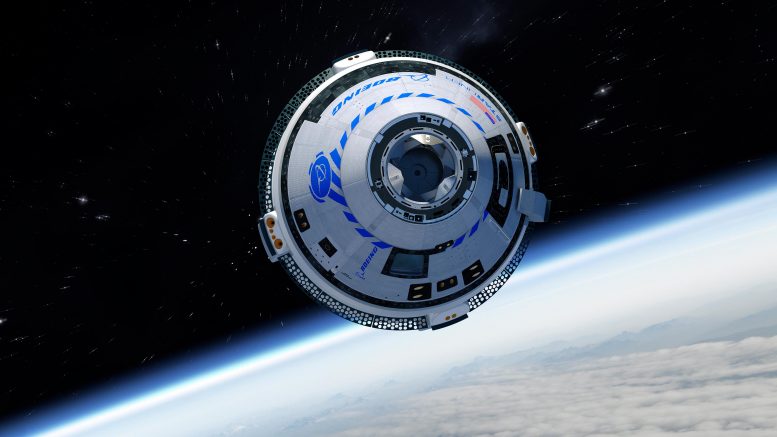NASA and Boeing recently completed an integrated mission dress rehearsal of Starliner’s uncrewed Orbital Flight Test-2 (OFT-2) mission to the International Space Station for NASA’s Commercial Crew Program. The campaign conducted largely inside Boeing’s Houston-based Avionics and Software Integration Lab (ASIL) culminated in a five-day end-to-end mission simulation known as the ASIL Mission Rehearsal, or AMR.
Gearing up for the program’s first AMR took several months of preparation configuring hardware and software, routing communications channels, mapping simulated sensor data, verifying flight procedures, and completing weeks of dry runs.
“The AMR is one of many examples of Boeing’s commitment to flying NASA astronauts as safely as possible,” said Chad Schaeffer, commercial crew software certification manager. “The joint Boeing and NASA system and software teams have worked very closely to prepare for the OFT-2 mission, including building stronger relationships and improved processes that are paying dividends for our commercial crew missions.”

Boeing Starliner flight directors Bob Dempsey and Edward Van Cise operate a simulated Orbital Flight Test-2 rendezvous and docking with the International Space Station from inside the Mission Control Center at NASA’s Johnson Space Center on April 23, 2021. As part of NASA’s Commercial Crew Program, OFT-2 is a critical developmental milestone on Boeing’s path to fly crew missions for NASA. Credit: Boeing
Mission operation teams inside flight control rooms at Johnson Space Center in Houston commanded the simulation using actual flight procedures. The run for record began 26 hours before launch and continued through docking, space station quiescent operations, 32 hours of power up procedures ahead of undocking, then landing and power down.
NASA astronauts Barry “Butch” Wilmore and Mike Fincke monitored every dynamic event from inside the lab using crew displays connected to the simulator. Wilmore and Fincke will fly aboard Starliner’s Crew Flight Test along with NASA astronaut Nicole Mann. Launch control teams at Boeing’s Mission Control Center in Florida participated in the rehearsal along with United Launch Alliance (ULA), which supported onsite in Houston after testing Starliner’s hardware inside its own Denver-based integration lab earlier this year.

NASA astronauts Barry “Butch” Wilmore and Mike Fincke monitor the launch portion of an integrated mission dress rehearsal of Boeing’s uncrewed Orbital Flight Test-2 from Boeing’s Houston-based Avionics and Software Integration Lab on April 22, 2021. Along with NASA astronaut Nicole Mann, Wilmore and Fincke will fly aboard Boeing’s CST-100 Starliner spacecraft for the company’s Crew Flight Test, as part of NASA’s Commercial Crew Program. Credit: Boeing
“I can feel that on the NASA/Boeing team, there is a deep passion for spaceflight and doing what it takes to have a successful mission,” said NASA astronaut Mike Fincke. “I am glad to be on this team.”
An AMR will be conducted before every future flight serving as an additional confidence and integration test recommended by the NASA/Boeing Joint Independent Review Team as a result of Starliner’s first test flight. With the conclusion of the AMR, all the review team’s recommended actions relating to Starliner software are complete and pending closure by NASA. Boeing and NASA will continue supporting post-test reviews and updating the software to include lessons learned from the AMR campaign.
NASA and Boeing are targeting 2:53 pm EDT Friday, July 30, for the launch of Starliner’s next test flight, OFT-2.
“We’re feeling very confident in the software with the success of end-to-end testing,” said John Vollmer, Starliner program manager. “This campaign is about more than just our next mission. We’re working to ensure the safety and success of all future Starliner flights for NASA and every commercial customer to come.”
Article From & Read More ( Boeing’s Starliner Completes Full Space Station Mission Simulation - SciTechDaily )https://ift.tt/3txjYEa
Science

No comments:
Post a Comment